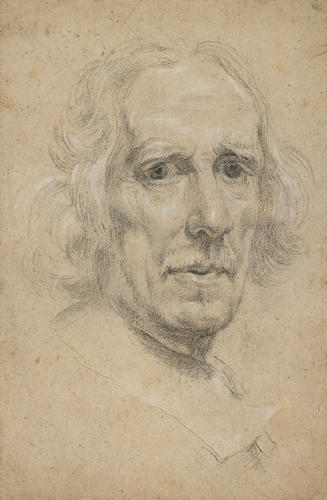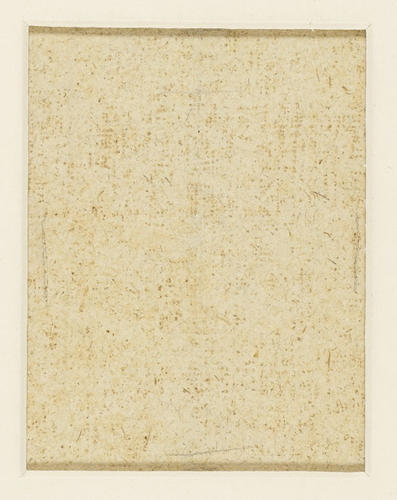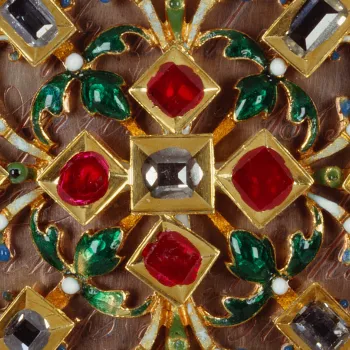A self-portrait c. 1675-80
Black and white chalks on buff paper | 41.3 x 27.1 cm (sheet of paper) | RCIN 905539
-
A self-portrait drawing of Gianlorenzo Bernini, facing three-quarters to the right.
Bernini was the outstanding figure of the Italian Baroque, a sculptor, architect, painter and playwright whose energy, imagination and deep religious conviction transformed the city of Rome during the course of his 70-year career. Most of Bernini’s drawings relate to his grand projects but he was also a productive and accomplished portrait draughtsman. This compelling self-portrait is the most celebrated of all his drawings.
When in 1665 Bernini visited France for five months at the invitation of Louis XIV, his guide, the civil servant and collector Paul Fréart de Chantelou, kept a diary of the visit and on 6 June he recorded Bernini’s appearance: 'Cavalier Bernini is a man of medium height but well-proportioned and rather thin. His temperament is all fire. His face resembles an eagle’s, particularly the eyes. He has thick eyebrows and a lofty forehead, slightly sunk in the middle and raised over the eyes. He is rather bald, but what hair he has is white and frizzy. He himself says he is sixty-five. He is very vigorous for his age and walks as firmly as if he were only thirty or forty. I consider his character to be one of the finest formed by nature, for without having studied he has nearly all the advantages with which learning can endow a man.… He is an excellent talker with a quite individual talent for expressing things with word, look and gesture.'
The present drawing demonstrates both the accuracy of Chantelou’s description and Bernini’s self-conscious pride in his own impressive, even forbidding character and countenance. The ageing artist has investigated his own features with great honesty. His thinning hair is sketched in only lightly and his cranium diminished in size: instead he has exaggerated his facial features – his sunken cheeks, strong nose and chin, mouth pursed as if on the point of speaking and, above all, his densely drawn hooded eyes.
The drawing is usually dated to around 1665, on no particular evidence other than Chantelou’s description of that year, but it could well be several years later. Sutherland Harris has argued that, given Bernini’s robust health, the facial features here are those of a man much older than the 67 years that he reached in 1665 and that the drawing may have been executed at the milestone age of 80, in 1678. The text of the Ars Moriendi (‘Art of Dying’) had circulated in many versions from the fifteenth century onwards, and throughout the latter half of his life Bernini had attended the devotions of the confraternity of the Bona Mors (‘Good Death’) at the church of the Gesù in Rome. He prepared meticulously for his own death, beginning a bust of Christ the Saviour in 1679 as knowingly his last work, and the manner of his dying was reported by his contemporaries to have been exemplary. Self-examination (mainly spiritually but unavoidably physically too) was an important element of a good life and a good death, and it is not fanciful to see in this self-portrait a conscious examination of the marks of age on Bernini’s face, powerful reminders of the inevitability of his approaching death.
Text adapted from Portrait of the Artist, London, 2016Provenance
Probably acquired by George III in 1762 as part of the collection of Cardinal Alessandro Albani; first recorded in a Royal Collection inventory of c.1810 (Inv. A, p. 114: 'Portraits')
-
Medium and techniques
Black and white chalks on buff paper
Measurements
41.3 x 27.1 cm (sheet of paper)
Object type(s)
Other number(s)
RL 5539Alternative title(s)
A self-portrait of Giovanni Lorenzo Bernini











